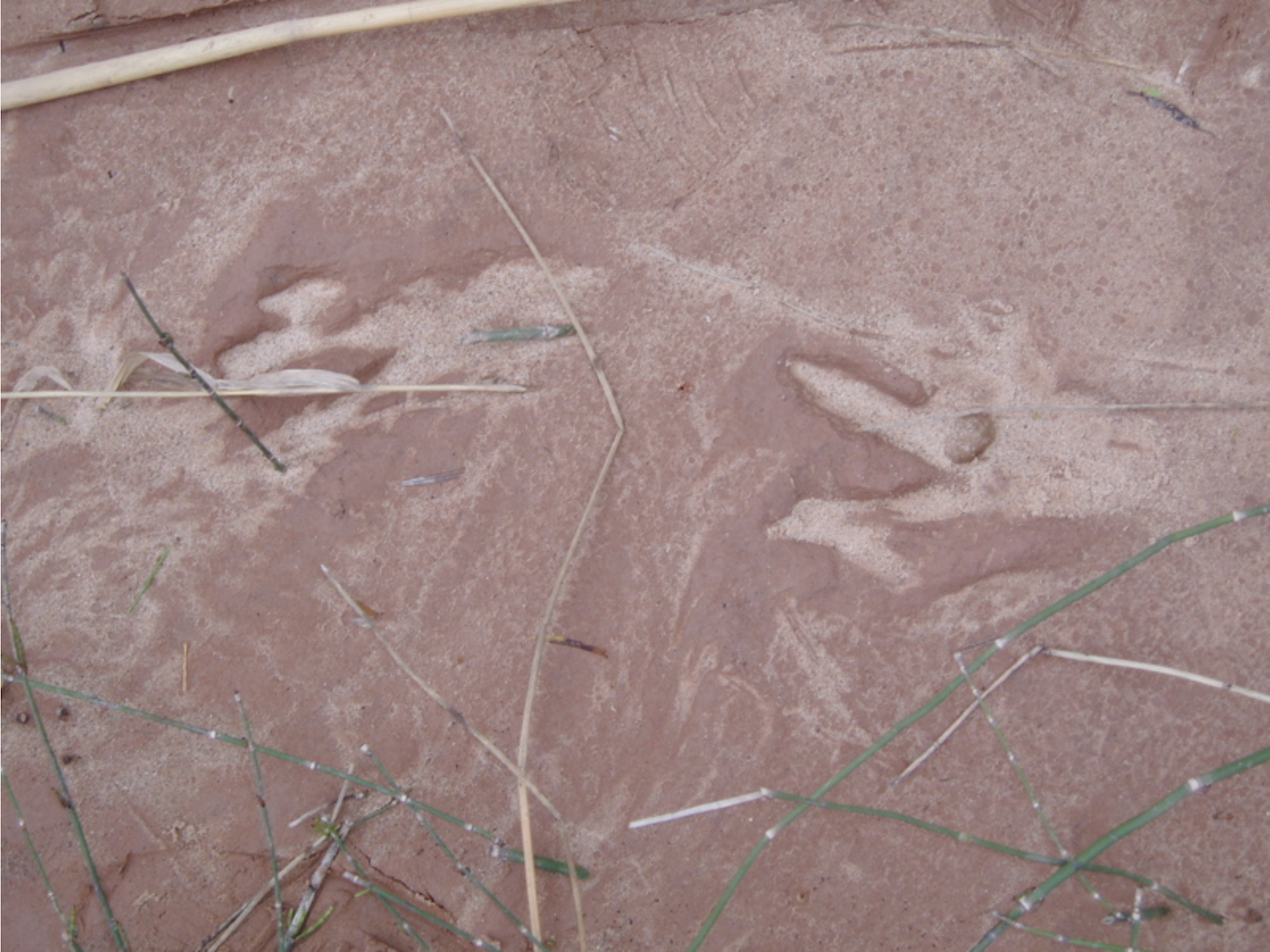INTRODUCTION
Beaver (Castor canadensis) are a common mammal species along the Colorado River corridor within the Grand Canyon. Along the mainstem they build dens in the banks of the river and feed on riparian vegetation. They are known to eat willows (Salix spp.), cottonwoods (Populus spp.), and exotic tamarisk (Tamarix ramosissima) in the Grand Canyon (Hoffmeister 1971), although only willows and cottonwoods are considered preferred foods (Whitaker 1998), and cottonwoods are uncommon along the mainstem of the Colorado River (Infalt 2005). It is believed that beaver populations have increased since the installation of Glen Canyon Dam due to an increase in riparian vegetation and the flattened hydrograph (Dettman 2005). These factors have increased food availability and led to more reliable and stable bank dens. When traveling the river, we noticed numerous willows that showed signs of intense beaver damage, while other plant species showed less damage. We decided to examine beaver herbivory patterns and plant distributions to see if beaver populations may be causing a decline in willows through preferential feeding on these species, and in turn aiding the invasion of tamarisk.
SURVEY RESULTS
Visual estimates of beaver herbivory were conducted at approximately river mile 123 left, and at the confluence of Tapeats Creek and the mainstem (approximately river mile 133 right). At each site, vegetation species dominance (by canopy cover) was estimated. The site was then haphazardly searched for beaver damage. When signs of herbivory were found, the plants were identified and recorded.
At river mile 123 the vegetation community was characterized by a mix of willow (Salix spp.), seepwillow (Baccharis salicifolia), and tamarisk (Tamarix ramosissima), with approximately codominant abundances. Several beaver slides and tracks were found (Fig. 1), one beaver was spotted, and evidence of herbivory was prominent (Fig. 2). Herbivory was observed on all three plant genera, but frequency of beaver damage on willows was much higher relative to the frequency of willows in the plant community. Also, beaver damage was concentrated on increasingly smaller stems of all species over time, as indicated by the apparent age of chew marks on individual stems. The oldest chew marks were on the largest stems, and the most recent chew marks were on the smallest stems.


At Tapeats Creek the vegetation community was dominated by seepwillow, with tamarisk as a subdominant and sparse willow shoots along the river bank. Herbivory was observed on the small willows and some of the tamarisk. There were no large willow specimens, so herbivory was on small shoots only, but two large (3 inch diameter) tamarisk trunks were found gnawed off along with some small shoots (Fig. 3).

DISCUSSION
The herbivory patterns observed suggest that beaver will utilize tamarisk, but tamarisk herbivory is minimal when willows (the apparent preferred food) are numerous. As willow abundance decreases (as seen at Tapeats Creek) beaver will increase selection of tamarisk. Evidence from Tapeats Creek suggests beaver may switch to tamarisk as willow abundance declines, although many other sites further down the river, which lacked willows, showed no signs of beaver.
This observed willow preference has many possible indications for the persistence of willow along the mainstem. Beaver populations have increased since the closure of Glen Canyon Dam. Beaver preference for willow is exerting strong selection pressures on willow, as evidenced by the presence of increasingly smaller stems on willow plants over time. Also, preferential beaver herbivory on willow can provide a competitive advantage for tamarisk. The strong herbivorous selection by beaver and competition with tamarisk appear to be depressing regeneration and decreasing willow populations in areas colonized by beavers.
It appears that beaver are over harvesting their preferred food, and giving other plant species a competitive advantage by suppressing resprouting of harvested plants. As willows decline or become locally extirpated (depending on harvest pressures) sites may become even more tamarisk-dominated. This will either cause beavers to leave in search of preferred foods, or will force them to shift to less desirable plant species. However, the nutritional value of tamarisk for beavers is unknown, so it is possible that as they are forced to switch to a less nutritious food source, the negative feedback placed on beaver populations may allow willows to increase again (if tamarisk hasn’t out competed it entirely) in areas where beaver populations are potentially declining.
It appears that willow is the preferred food for beavers within the Grand Canyon, and that this strong herbivorous selection by beaver coupled with tamarisk competition may eventually depress or extirpate local populations of willow.
REFERENCES
Dettman, J.A. 2005. “Glen Canyon Dam: A mixed blessing for mammals, reptiles, and amphibians?” In. J. Mount, P. Moyle and C. Hammersmark (eds.). Ecogeomorphology of the Grand Canyon and its Tributary Streams. Davis, CA.
Hoffmeister, D. F. 1971. Mammals of Grand Canyon. University of Illinois Press, Urbana, Chicago, London.
Infalt, S.B. 2005. “Colorado River Native Riparian Vegetation in the Grand Canyon: How Has Glen Canyon Dam Impacted These Communities?” In. J. Mount, P. Moyle and C. Hammersmark (eds.). Ecogeomorphology of the Grand Canyon and its Tributary Streams. Davis, CA.
Whitaker, Jr., J. O. 1998. National Audobon Society Field Guide to North American Mammals. Alfred A. Knopf, New York.
